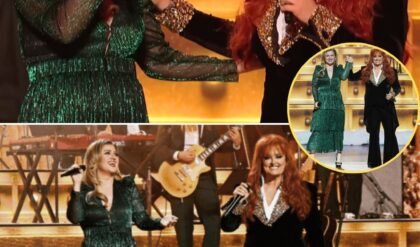
Season 2 of Amazon’s The Rings of Power sparked controversy and online debate after the series depicted a sympathetic orc family, a subject that The Lord of the Rings film trilogy largely avoided.
What Is ‘The Rings Of Power’ Orc Family Controversy?
In contrast to the brutal, bloodthirsty orcs of Peter Jackson’s Lord of the Rings, Amazon’s Rings of Power shows an orc soldier who doesn’t want to participate in the war.
The sympathetic orc even says goodbye to his family, marking the first time an orc mother and baby has appeared in an adaptation of author J.R.R. Tolkien’s work.
The appearance of a free-willed orc pacifist, along with loving mother and child, prompted critics to dismiss the show as breaking canon and disrespecting Tolkien’s carefully crafted lore.
Reactionary critics expressed outrage, as though the show was tearing the source material apart, page by page.
Does Amazon’s ‘Rings of Power’ Really Break Canon?
Amazon’s Rings of Power has broken Tolkien’s canon before, but the question of orc morality and family is an interesting gray area within his work.
Knowledgeable Tolkien fans have been having this conversation for decades, debating if orcs can have families, or free will.
Technically, the scene in question doesn’t really break Tolkien’s canon, because Tolkien himself was unsure about the true nature of the orcs.
However, the scene certainly breaks the tone established by the books, as well as Jackson’s Rings and Hobbit trilogies. Sympathetic orcs have become fairly common in pop culture (such as D&D and World of Warcraft), but Tolkien’s orcs are usually depicted as monstrous soldiers with no capacity for empathy.
The sight of an innocent orc baby calls into question the inherent evil of the orc race—clearly, this baby is loved by its mother, and loves her back.
For many viewers, the scene simply felt wrong—after all, the audience are not supposed to sympathize with these creatures, who always find themselves on the wrong side of Middle-Earth history.
The orcs are gleefully slaughtered onscreen, and in the pages of Tolkien’s books, but the existence of orc families adds an uncomfortable undertone to these triumphant scenes.
Tolkien is often thought of as a world-building genius (because he is), but that doesn’t mean that he had every single detail of his world perfectly laid out—it would be boring if he did.
There are many inconsistencies within Tolkien’s work, just like any other writer; the man frequently changed his mind, left questions unanswered, and in the case of the orcs, never settled on a firm origin story.
What Are Tolkien’s Orcs, Exactly?
Tolkien played with the idea that his orcs were mindless puppets, created from stone, or walking beasts with no true power of speech, only the ability to parrot words.
Tolkien thought that the orcs might have been created by Morgoth (Sauron’s master), then considered them to be a corrupted offshoot of elves and men, tortured by Morgoth to the point of madness.
However, Tolkien struggled with the notion that evil could create life, and seemed to dislike the idea of the orcs being descended from mutilated elves, as that would lead to more contradictions, such as their lack of immortality.
In his later years, Tolkien often compared orcs to men, and seemed to view them with a more nuanced eye. As Tolkien continued to write about the creatures, he couldn’t help humanizing them; The Lord of the Rings books show orcs having coherent conversations, and are clearly capable of making decisions.
Tolkien died before he could finalize the true nature of his orcs, leaving his fans to debate their true nature and origin.
Jackson’s film trilogy tackled Tolkien’s contradiction in a scene that shows Saruman explaining that the orcs are the descendants of elves, who were imprisoned, tortured, and corrupted beyond recognition, then showing an orc-human hybrid emerging from the ground, as though it was grown inside the earth.
In Jackson’s trilogy, there is no room for nuance with orcs—they are irredeemable.
The existence of an evil army, composed of soulless soldiers with no humanity, has long been a staple of fantasy fiction. This trope has been heavily criticized for being overly simplistic, and unrepresentative of the muddy nuances of war.
Famously, The Lord of the Rings film trilogy was criticized by Studio Ghibli director Hayao Miyazaki, who said:
“Americans shoot things and they blow up … as you’d expect, they make movies like that. If someone is the enemy, it’s okay to kill endless numbers of them. Lord of the Rings is like that. If it’s the enemy, there’s killing without separation between civilians and soldiers.”
Miyazaki has written and directed many fantasy films that show the horrors of war, without reducing the enemy to mindless cannon fodder, and many other fantasy works do the same, moving away from Tolkien’s good vs. evil template.
Do Tolkien’s Orcs Have Families?
As previously stated, Tolkien was troubled by the orcs, and was unable to resolve the contradiction of their inherent evil. However, there is plenty of evidence within Tolkien’s books that orcs do have families.
In The Hobbit, Gollum describes catching and eating a “small goblin-imp. How it squeaked!” (In Tolkien’s world, orcs and goblins are interchangeable). Later, Gollum describes the imp as a “nassty young squeaker.”
The Hobbit also features an orc known as Bolg, who is the son of Azog, and inherits a leadership position from his father. Tolkien even wrote that orcs “multiplied after the manner of the Children of Iluvatar,” meaning that they bred like elves and men.
Clearly, orcs do have children. Tolkien did not want to delve into the details of their society, particularly their wives, mothers and children, possibly because that would lead to more uncomfortable questions.
Readers and viewers are left to wonder, but Amazon’s Rings of Power chose to depict what Tolkien left to the imagination.





